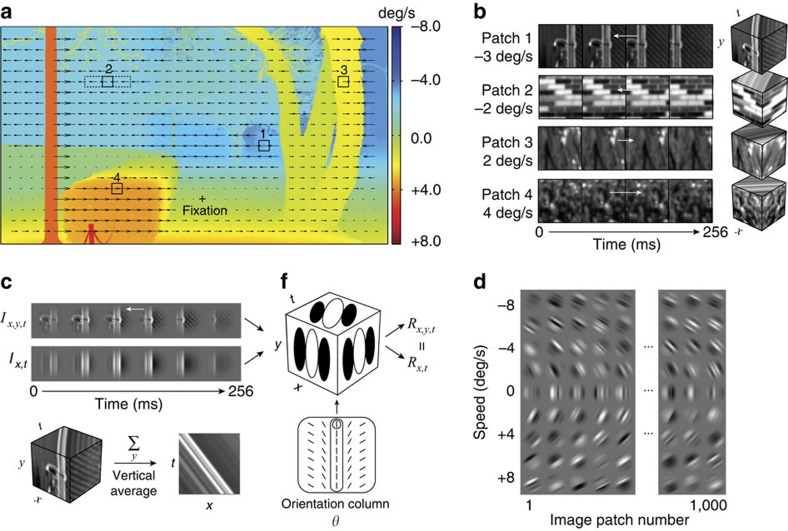Figure 2. Naturalistic motion stimuli.
(a) Speed of retinal image motion in a natural scene for an observer walking briskly to the left at 3.0 mph while fixating the marked point on the ground. A static range image was captured via laser time-of-flight. Distances to the objects in the scene range from 7 to 150 m. Four randomly selected image patches were the starting frame for each of the four movies (solid squares, the starting frame for each movie). (b) Movie image sequences and motion cubes from the image patches in a. Motion cubes show a three-dimensional (3D) space-time (Ix,y,t) representation of movie. Different speeds (and different motion directions) correspond to different orientations in space-time (top surface of each cube). (c) Stimulus generation for computational analysis and behavioural experiment. Movies were vertically averaged and windowed to create a 2D space-time (Ix,t) ‘component-motion' movie. Ideal and human observers were presented 2D movies. Vertically oriented space-time receptive fields, like those within an cortical orientation column, give identical responses (ρ=0.989; y=1.01x−0.02) to 2D and 3D movies. (d) Random samples from a large set of naturalistic space-time image movies that span a range of speeds (−8 to 8 deg/s). Variation within rows is due to textural variation in the movie (‘nuisance stimulus variation'). Variation across the rows is due to variation in speed.

